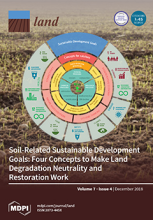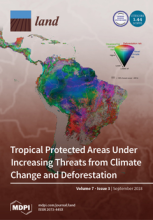Land Library
Welcome to the Land Portal Library. Explore our vast collection of open-access resources (over 74,000) including reports, journal articles, research papers, peer-reviewed publications, legal documents, videos and much more.
/ library resources
Showing items 37 through 45 of 54.Savannas are extremely important socio-economic landscapes, with pastoralist societies relying on these ecosystems to sustain their livelihoods and economy.
Across the United States, there has been a growing interest in local food production, which provides an alternative way to increase self-sufficiency and support greater well-being and food security at the community level.
The demand for energy has been growing worldwide, especially in India partly due to the rapid population growth and urbanization of the country. To meet the ever-increasing energy requirement while maintaining an ecological balance is a challenging task.
Cash crops, which include eucalyptus, play an important role in Thailand in wood utilization. Consequently, cash crops have become a significant driving force in land use changes and low crop yield; thus, the development of an accurate cash crop suitability model is needed.
We established the statistical relationships between seasonal weather variables and average annual wheat yield (Hard Red Spring and Durum wheat: Triticum spp.) for the period of 1979–2016 for 296 rural municipalities (RMs) throughout six soil zones comprising the arable agricultural zone of Saska
Barranquilla is known as a dynamically growing city in the Colombian Caribbean. Urbanisation induces land use and land cover (LULC) changes in the city and its hinterland affecting the region’s climate and biodiversity.
In recent years, the scientific interest for the economic and landscape impact of wind farms has increased.
Large areas of deforested and degraded land, particularly degraded peatlands, need a viable long-term solution for restoration, ideally one that ensures energy security without compromising food security or biodiversity conversation.
Urban ecosystem services (ES) contribute to the compensation of negative effects caused by cities by means of, for example, reducing air pollution and providing cooling effects during the summer time.





